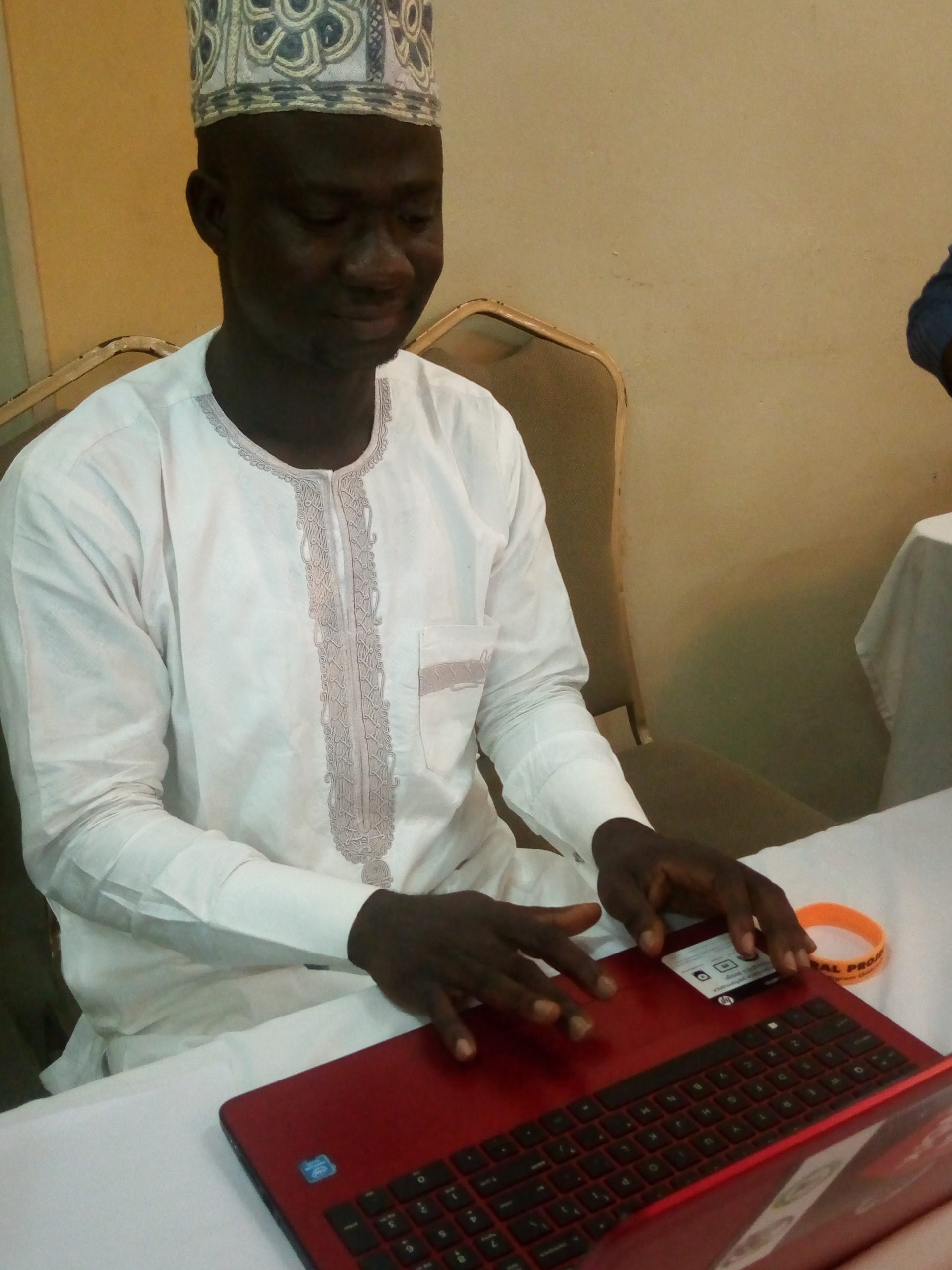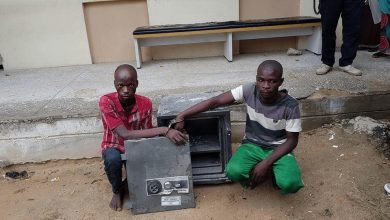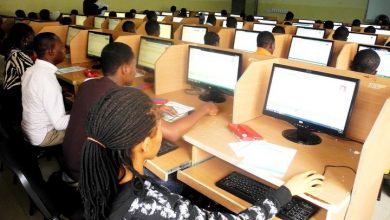
For the Record: BEING PAPER DELIVERED BY, DR MUJAHEED ADEGBOLA ON TOPIC: MIGRATION, CHILD PROTECTION, VOCATIONAL TRAINING AND EMPLOYMENT: ANY NEXUS? TO COMMEMORATE INTERNATIONAL MIGRANTS DAY ORGANISED BY TDH NIGERIA HELD IN ABEOKUTA,DECEMBER19,2019

People have many reasons why they might want to move from one place to another. These reasons may be economic, social, political or environmental. For migration to take place there are usually push factors and pull factors at work. Push factors are the reasons that make someone decide to move. This is their own experience of life in one place which gives them good reasons to leave it. Often push factors are negative things such as unemployment, poverty, droughts, flooding, war, poor education opportunities or poor services and amenities.
Pull factors, on the other hand, are the expectations which attract people to the new place. They are usually positive things such as job opportunities, a better standard of living, better education or better healthcare.
11 out of 17 SDGs contain targets and indicators relevant to migration or mobility
The SDGs’ central reference to migration is made in target 10.7: ‘to facilitate orderly, safe, regular and responsible migration and mobility of people, including through the implementation of planned and well-managed migration policies’.
Migration presents both opportunities and challenges for societies, communities and individuals. Migration alters the structure of families. While it is true that economic factors are major drivers, migration involves highly diverse groups of people, including girls, boys, women, men, and better-off as well as poorer people.
WHO IS A MIGRANT
(International Organisation for Migration) defines a migrant as any person who is moving or has moved across an international border or within a State away from his/her habitual place of residence, regardless of (1) the person’s legal status; (2) whether the movement is voluntary or involuntary; (3) what the causes for the movement are; or (4) what the length of the stay is.
International migrants refers to people living in a country or area other than they were born
MIGRANT CHILDREN AND BACKGROUND ISSUES
Source: United Nations, Department of Economic and Social Affairs, Population Division, Trends in International Migrant Stock: The 2017 Revision Migrants by Age and Sex. United Nations, New York, 2017.
As at 2017, there were 258 million people worldwide living outside their country of birth; 30 million of them were children. Africa has the largest share of children among its migrant population – over one in four immigrants in Africa is a child, more than twice the global average. The share is particularly large in Western and Eastern Africa, where in countries like Nigeria, Ethiopia, and Kenya children account for more than 40 per cent of the immigrant population
Source: UNICEF analysis based on United Nations, Department of Economic and Social Affairs, Population Division, Trends in International Migrant Stock: Migrants by Age and Sex. United Nations, New York, 2017
Africa’s proportion of child migrants most closely matches its share of the global child population (21 and 26 per cent, respectively).
Children, as part of larger population movements, generally end up in higher income countries after they migrate. Children who migrate independently of their parents or adult guardians are in many ways similar to adult migrants in seeking new social and economic opportunities.
These children, sometimes referred to as ‘unaccompanied minors’, may actively seek migration opportunities as a result of many factors. Yet many migrant children are not recognized as migrants because they are identified using other terms, such as domestic workers, street children or foster children.
Many of these children send remittances to their families, combine work with schooling or training and manage to save although faced with many risks. Independent migrant children are significantly affected by the absence of protection and support from their families, and by the challenges of their new situations after migration.
Though migration can be a positive experience for children and can provide them with a better life, increased opportunities and an escape from immediate threats such as forced marriage, conflict and natural disaster, child migrants can face serious challenges while migrating
Yet, some migrant children flourish and contribute positively to their new communities; and policies and programmes can be devised to support and protect those children who may become vulnerable.
CHILD PROTECTION CONCEPTUALISED
According to UNICEF, ‘child protection’ to refer to preventing and responding to violence, exploitation and abuse against children – including commercial sexual exploitation, trafficking, child labour and harmful traditional practices
A child protection system consists of laws and policies, meaningful coordination across government departments and between sectors at different levels, multiple governmental and nongovernmental actors working in synergy, knowledge of and data on child protection issues and good practices, minimum child protection standards and oversight, preventive and responsive services, a skilled child protection workforce, adequate funding, children’s voices and participation and an aware and supportive public.
Every child has the right to be safe from harm. Nevertheless, every year the lives and physical, mental and emotional well-being of millions of children around the world are threatened by maltreatment such as abuse, neglect, violence and exploitation.
UNICEF reports that about 215 million children are involved in child labor, which is a form of child exploitation; 115 million of them are involved in hazardous work.
The vulnerability and risk susceptibility of children is particularly high for the children on the move and those affected by mobility Migrant children that are categorized under ‘unaccompanied’ minors are at a very high risk and are more vulnerable to maltreatment, because they have lost their first line of protection.
These children need to be protected, because they are physically, mentally and emotionally immature and unable to adequately protect themselves The mobility of children requires safeguarding measures to ensure the reduction of their vulnerability and their personal development at local, national and regional (transnational) levels.
The specific needs of children affected by mobility should be taken into consideration by national child protection systems through the implementation of Protective Accompaniment of Children (PAC, a system developed by Child Protection Actors, Terre des homes).
CONCEPTUALISING PAC
PAC is a work of social accompaniment of the children (direct accompaniment) or of their immediate environment (indirect) with the aim of:to prevent risks related to the mobility of children; help children in mobility to improve their situation, access their rights, live better and develop in according to their best interests; provide assistance to children victims of exploitation, trafficking and abuse; to make community and institutional environment of children in mobility more protective along their migratory routes.
PAC is not limited to only direct or personal intervention to a child. It is also made up of : Accompanying or supporting children groups who have their own identity and / or problem and are able to act collectively and in solidarity (groups of peers gathered on a generational, activities or learning basis; groups of children linked by a common project or a common situation, groups organised within an associative movement or a group, etc.)
Supporting key actors in the environment of those children (individuals, associations, structures) in order to reinforce them in their roles, responsibilities and practices of accompaniment and of protection of the rights and the well-being of children (indirect accompaniment of children = accompaniment by family, community or institutional actors in the field of child protection and accompaniment).
The PAC Process
1- Establishment of a relationship between the accompanied (beneficiary child or adult, individual or group) and the accompanying person (social worker of a governmental or non-governmental service, practitioner).
2- Listen to the accompanied by the accompanying person. Joint analysis of the situation-problem
3- Support-advice, information, dialogue, exchange of ideas, principles and options.
4- Identification of a lasting solution. Development of the project to be implemented. Development of an agreement between the two parties as it concerns roles and responsibilities.
5- Well thought out decision making. Mutual and motivated commitment of both parties
6- Implementation of the decision taken, follow-up-accompaniment of the beneficiary and his project
7- Withdrawal of the accompanying person and empowerment of the accompanied
VOCATIONAL TRAINING Defined
Training that emphasizes skills and knowledge required for a particular job function (such as typing or data entry) or a trade (such as carpentry or welding). It is also referred as Career education, Technical training or Skills development
Basically, vocational training is education or training that prepares you for the day-to-day duties that you will be doing in your specific trade, craft, profession, or role. It equips you with real skills, as opposed to theoretical knowledge only.
Vocational training could be acquired through the formal educational system at a Technical College or University and Apprenticeship in vocation such as welding or electrical engineering, under a skilled professional in an actual work environment.
WHEREAS, Article 28 of the Convention on the Rights of the Child provides for the right of all children to education, stipulating that states shall:
(a) Make primary education compulsory and available free to all;
(b) Encourage the development of different forms of secondary education, including general and vocational education, make them available and accessible to every child, and take appropriate measures such as the introduction of free education and offering financial assistance in case of need;
(c) Make higher education accessible to all on the basis of capacity by every appropriate means;
(d) Make educational and vocational information and guidance available and accessible to all children;
Vocational training as a form of education is a key element for migrant children’s social inclusion into host communities. This is because it remains the only determinant to give a better leverage at their anticipated destinations.
THE BIG QUESTION IS: HOW COULD CHILDREN ON THE MOVE RECEIVE VOCATIONAL EDUCATION AND TRAINING?
Employment Discussed
The most frequently cited element of seeking a ‘better life’ was the search for employment. Individuals are not only driven by the objective reality of unemployment but also by their perceptions of their chances of finding a job.
Employment is an important component of successful settlement. But it could be more challenging for migrants especially children as there are no readymade jobs for them.
These challenges are particularly serious when children migrate without proper documents and/or without their families, and in countries where legal protection is absent and where children are prevented from accessing basic services such as education and health care.
In these situations, child migrants are at a high risk of exploitation and vulnerable to child labour.
Many child migrants end up in agriculture or services such as domestic work. Some of them, but not all, are victims of trafficking.
While trying to secure employment, child migrants often experience maltreatment – including suffering from isolation, violence, sub standard working conditions, non-payment of wages, and the threat of being reported to the authorities.
Evidence suggests further that amongst child labourers it is migrant children who receive less pay, work longer hours, less often attend school, and face higher death rates at work in comparison to local children.
THE NEXUS
Child Protection Systems through the Protective Accompaniments of Children frameworks should factor VET as means of empowerment for the migrant children. VET should hence be treated as post migrant empowerment for the
Vocational education and training (VET) programmes can help connect migrants children with the labour market and find jobs matching their skills and qualifications.Guidance, counselling and entrepreneurial training promote autonomy, adaptability, employability and career management skills should be part of PAC in the Child Protection System
Sector-based and entrepreneurial programmes have the potential to help integrate migrants’ children. Key actors who counsel migrants and/or offer VET-related and other services need to be trained to respond to their specific needs.
TOWARDS A CONCLUSION: THE HUGE VACUUM
Despite the numbers of children involved, the needs and interests of migrant children (which bothers mostly on greener pasture) are largely absent from mainstream debates on child protection, child labour and migration.
As a result, most governments and child protection actors have failed to develop effective policy responses to assist and protect migrant children.
And yet, governments are obliged to offer such protection as per Article 2.1 of the UN Convention on the Rights of the Child which states that “Every child without discrimination of any kind, irrespective of the child’s or his/her parents or legal guardian’s race, colour, sex, language, religion, political or other opinion, national, ethnic or social origin, property, disability, birth or other status is born with the same rights”. This includes the right to be free from child labour for both local and migrant children.
The Roadmap for achieving the elimination of the worst forms of child labour by 2016, agreed to at The Hague Global Child Labour Conference in 2010, also includes a focus on child migrants. In Article 5 it states that “Governments should consider ways to address the potential vulnerability of children to, in particular the worst forms of child labour, in the context of migratory flows”.
The barrier to achieving this roadmap as at 2016 is in the failure to domesticate VET as an empowerment strategies within the framework of Protective Accompaniments of Children affected by mobility in the Child Protection Systems.






